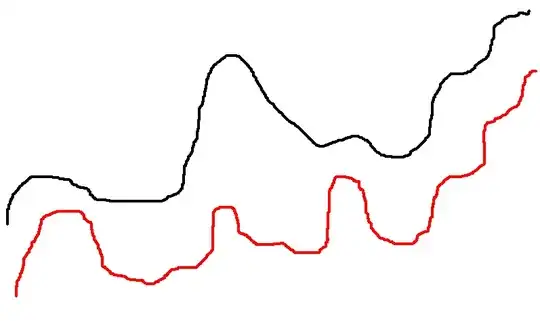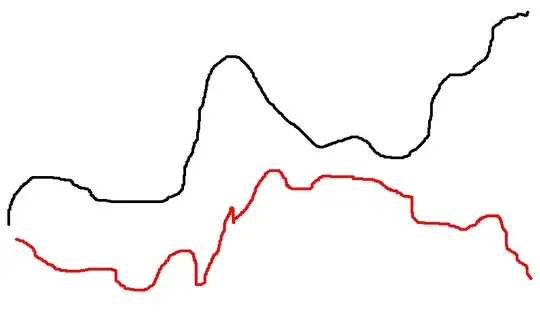I have two different time series both length = 100 and I need to know what is the best test (non-parametric, if possible), that return how much these two series are same or similar shapes.
Here are two examples: first one the two series are very similar shape, not matching perfectly but overall trends and tops and bottoms match.

Second example, these two serie are different both for tops, bottoms and trends

Edit: I am testing my series with Spearman's correlation coefficient, but I am not sure if this test can suits my need since Spearman test use a monotonic function, while my series are non-monotonic.
Am I correct?